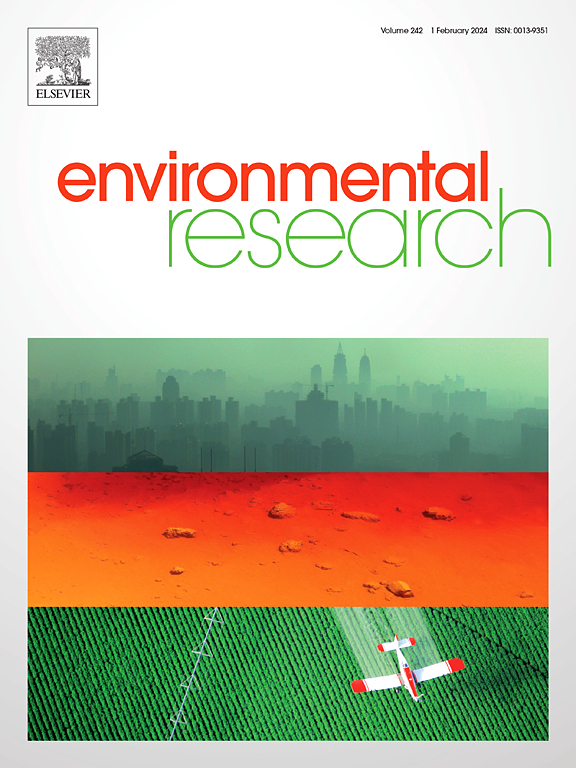基于生物炭的耐金属植物生长促进菌接种剂增强了黑麦草的植物稳定能力。
IF 7.7
2区 环境科学与生态学
Q1 ENVIRONMENTAL SCIENCES
引用次数: 0
摘要
具有促进植物生长特性的耐金属微生物是一种很有前途的生物修复剂,可提高受污染土壤的植物稳定性。然而,植物稳定效率与微生物群组成和多样性之间的关系仍不清楚。本研究从芽孢杆菌、假单胞菌和红假单胞菌中选择了三种抗镉(Cd)植物生长促进菌(PGPB)作为生物炭微生物接种剂的候选菌种。在我们进行的单一、双重和三重接种的盆栽实验中,更多样化的微生物群显著增加了根部的镉积累和地上生物量。与双重接种和单一接种相比,三重接种使根部镉积累增加了 56.4% 至 121.5%,地下生物量增加了 4.8% 至 46.2%。然而,在植物的地上部分没有观察到这种趋势,导致黑麦草中镉的转运因子降低。微生物接种改变了根圈细菌群落的结构,尤其是三重微生物接种处理,与其他处理组相比有显著差异。不过,α多样性没有发生明显变化。土壤 pH 值的升高及其与土壤酶的正向交互作用极大地促进了生物炭微生物接种的植物稳定效率,而根瘤菌群落的贡献则不太明显。总之,耐金属的 PGPB 接种可提高植物稳定效率,增强金属在土壤中的固定性,减少金属对生物和环境的威胁。本文章由计算机程序翻译,如有差异,请以英文原文为准。
Biochar-based metal tolerating plant growth promoting bacterial inoculants enhanced the ability of ryegrass for phytostabilization
Metal-tolerant microbes with plant growth-promoting traits represent a promising biological amendment for enhancing the phytostabilization of contaminated soils. However, the relationship between phytostabilization efficiency and microbial consortium composition and diversity remains unclear. This study selected three cadmium (Cd) resistant plant growth promoting bacteria (PGPB) from Bacillus, Pseudomonas, and Rhodopseudomonas were selected as candidates for biochar-based microbial inoculants. In our pot experiment with single, dual, and triple inoculations, a more diverse microbial consortium significantly increased root Cd accumulation and aboveground biomass. Triple inoculation boosted root Cd accumulation by 56.4 %–121.5 % and belowground biomass by 4.8 %–46.2 %, compared to dual and single inoculations. However, this trend was not observed in the aboveground parts of the plants, resulting in a decrease in the translocation factor of Cd in ryegrass. Microbial inoculation altered the structure of the rhizosphere bacterial community, especially the triple microbial inoculation treatment, which showed significant differences compared to the other treatment groups. However, there were no significant changes in alpha diversity. Increased soil pH and its positive interaction with soil enzymes significantly contributed to the phytostabilization efficiency of biochar-based microbial inoculation, whereas the contribution of rhizosphere bacterial communities was much less significant. In summary, metal-tolerant PGPB inoculation can promote phytostabilization efficiency and enhance metal immobilization in soil, reducing their threat to organisms and the environment.
求助全文
通过发布文献求助,成功后即可免费获取论文全文。
去求助
来源期刊

Environmental Research
环境科学-公共卫生、环境卫生与职业卫生
CiteScore
12.60
自引率
8.40%
发文量
2480
审稿时长
4.7 months
期刊介绍:
The Environmental Research journal presents a broad range of interdisciplinary research, focused on addressing worldwide environmental concerns and featuring innovative findings. Our publication strives to explore relevant anthropogenic issues across various environmental sectors, showcasing practical applications in real-life settings.
 求助内容:
求助内容: 应助结果提醒方式:
应助结果提醒方式:


